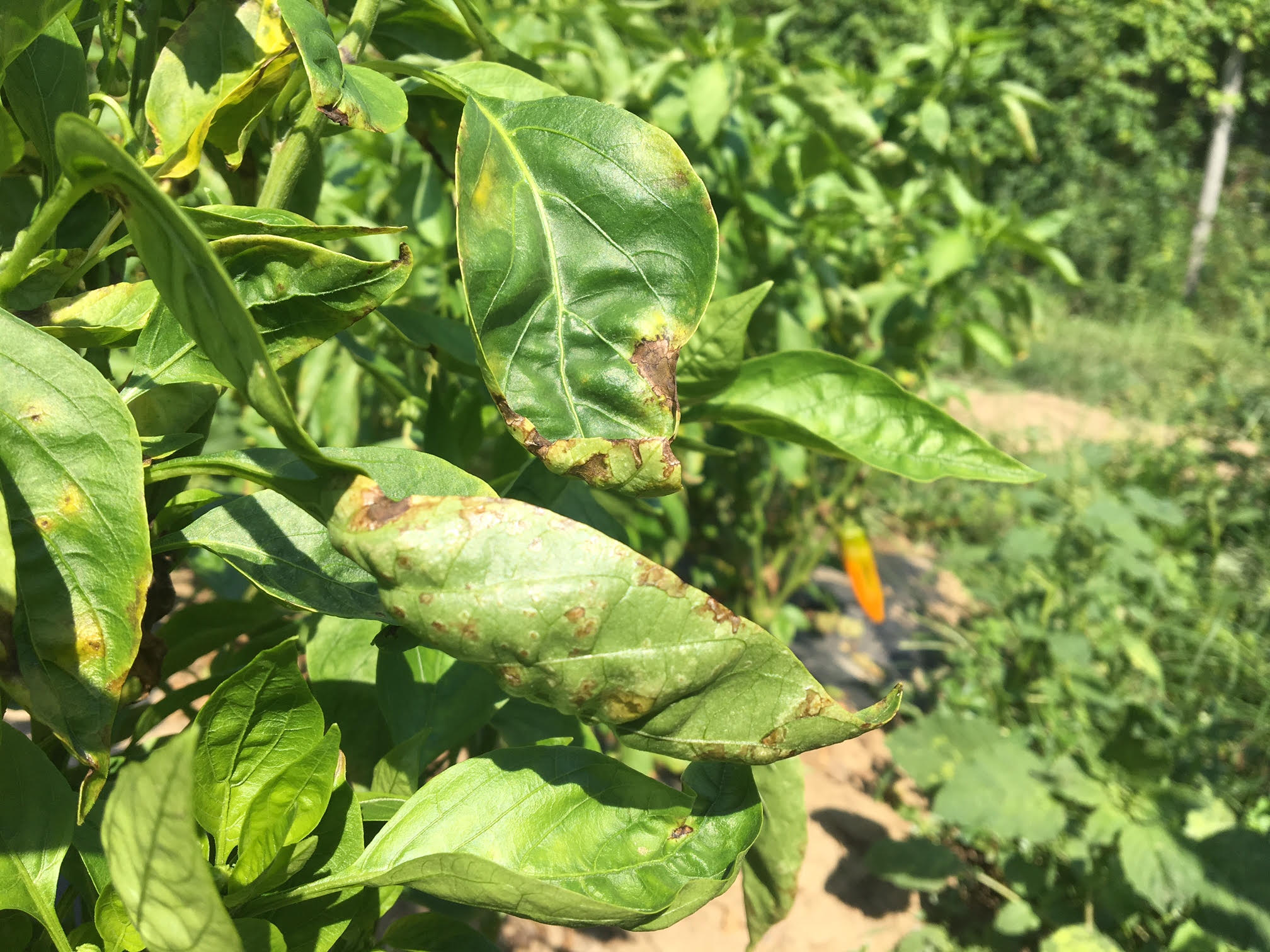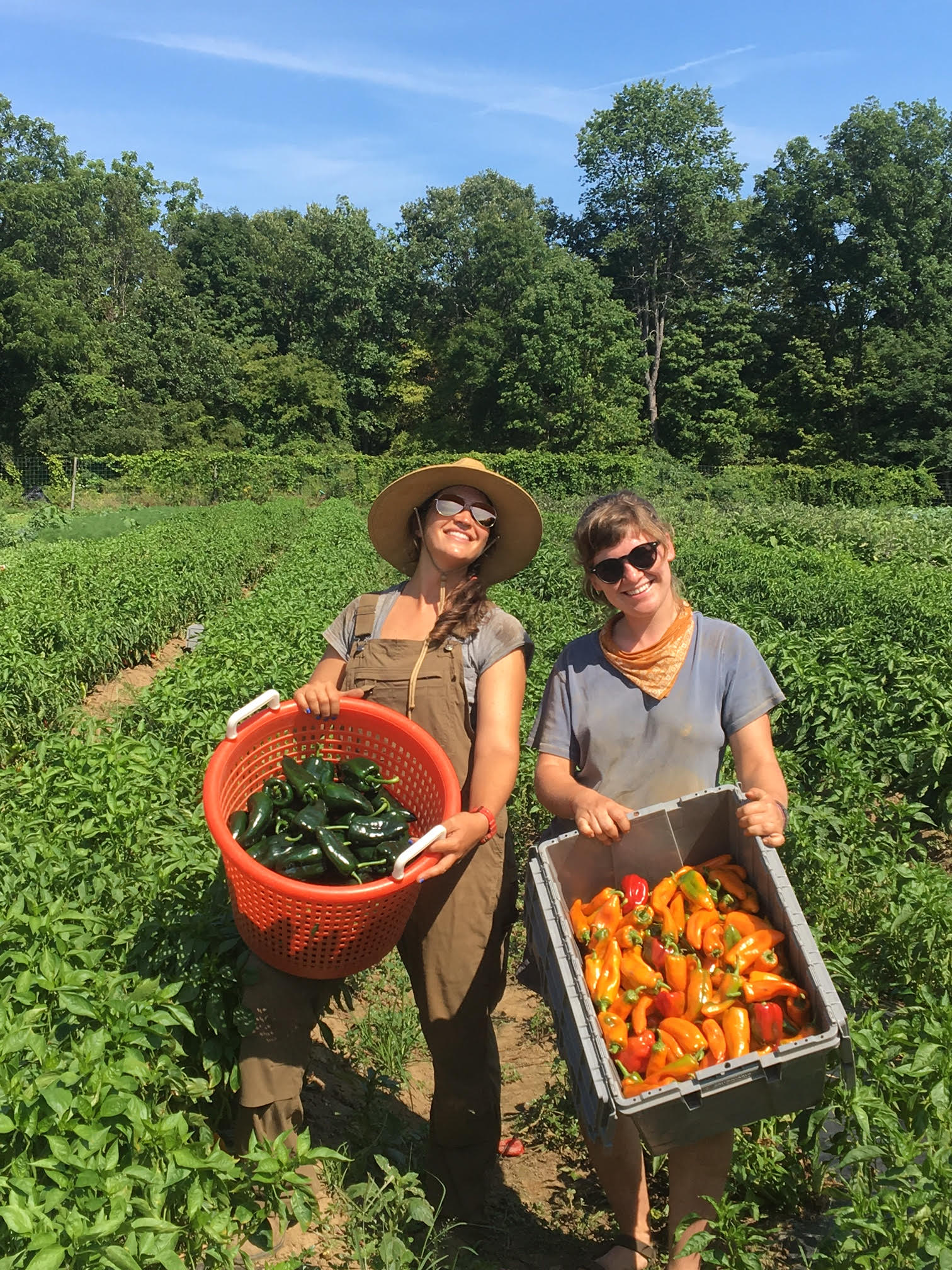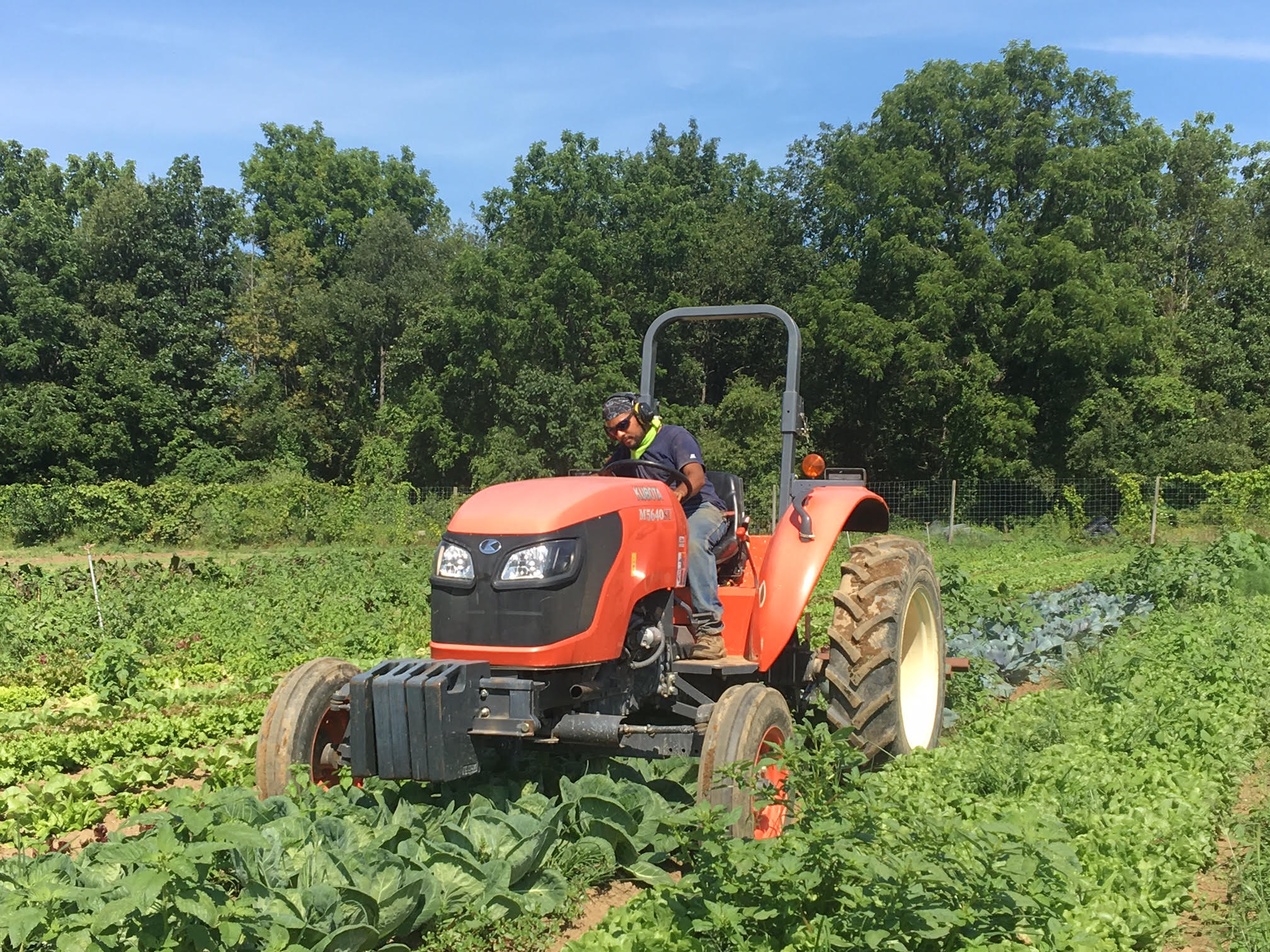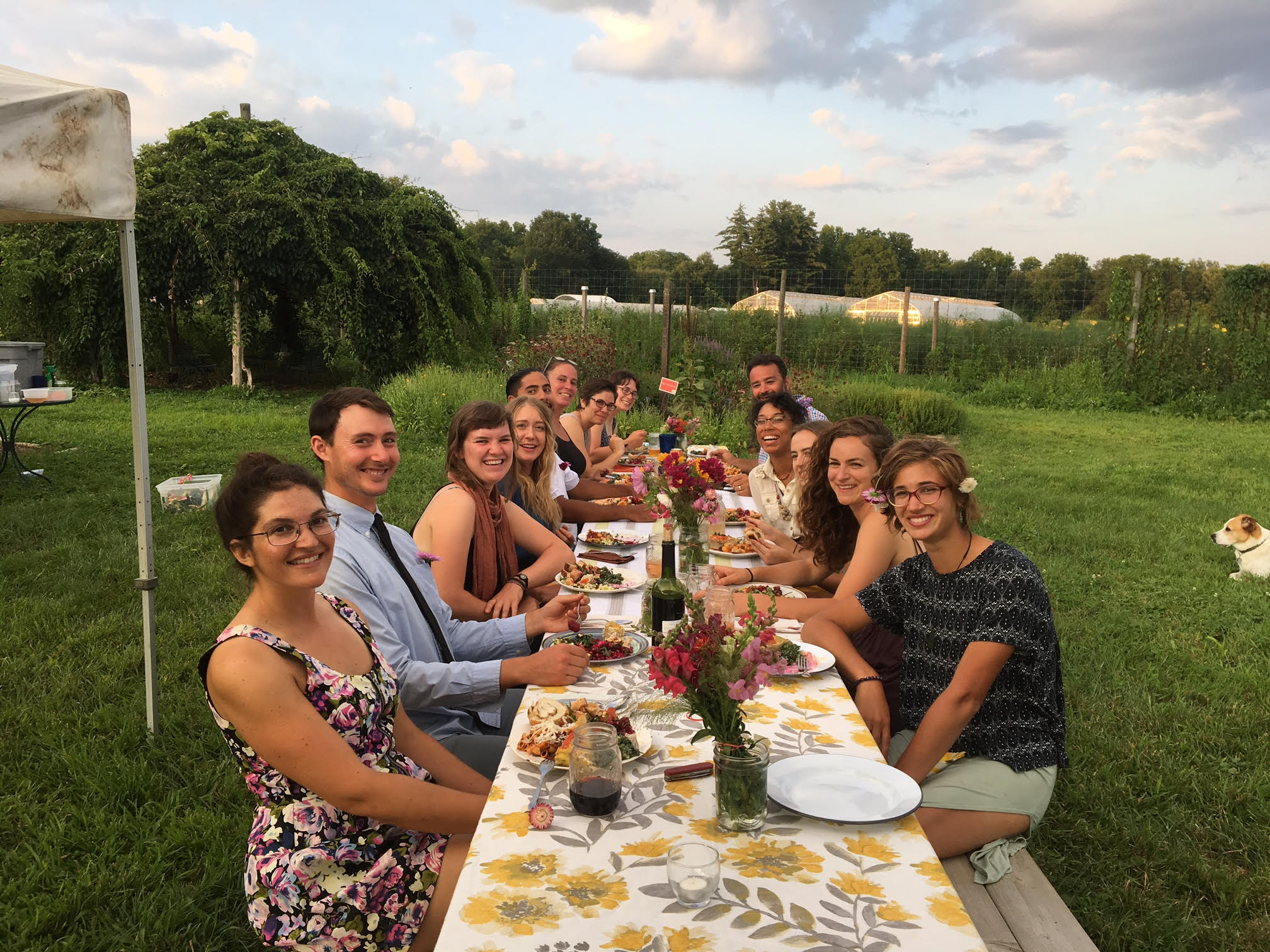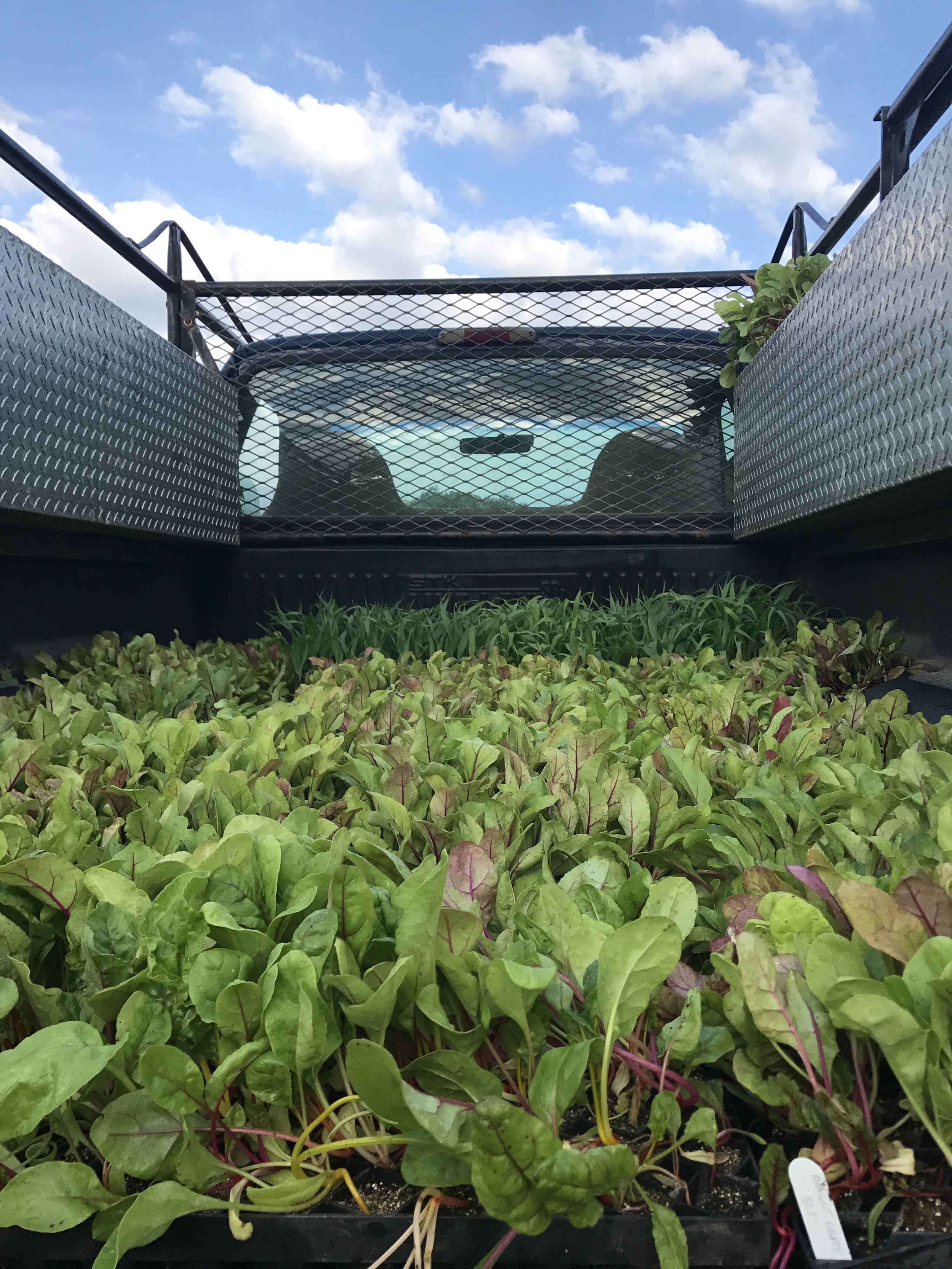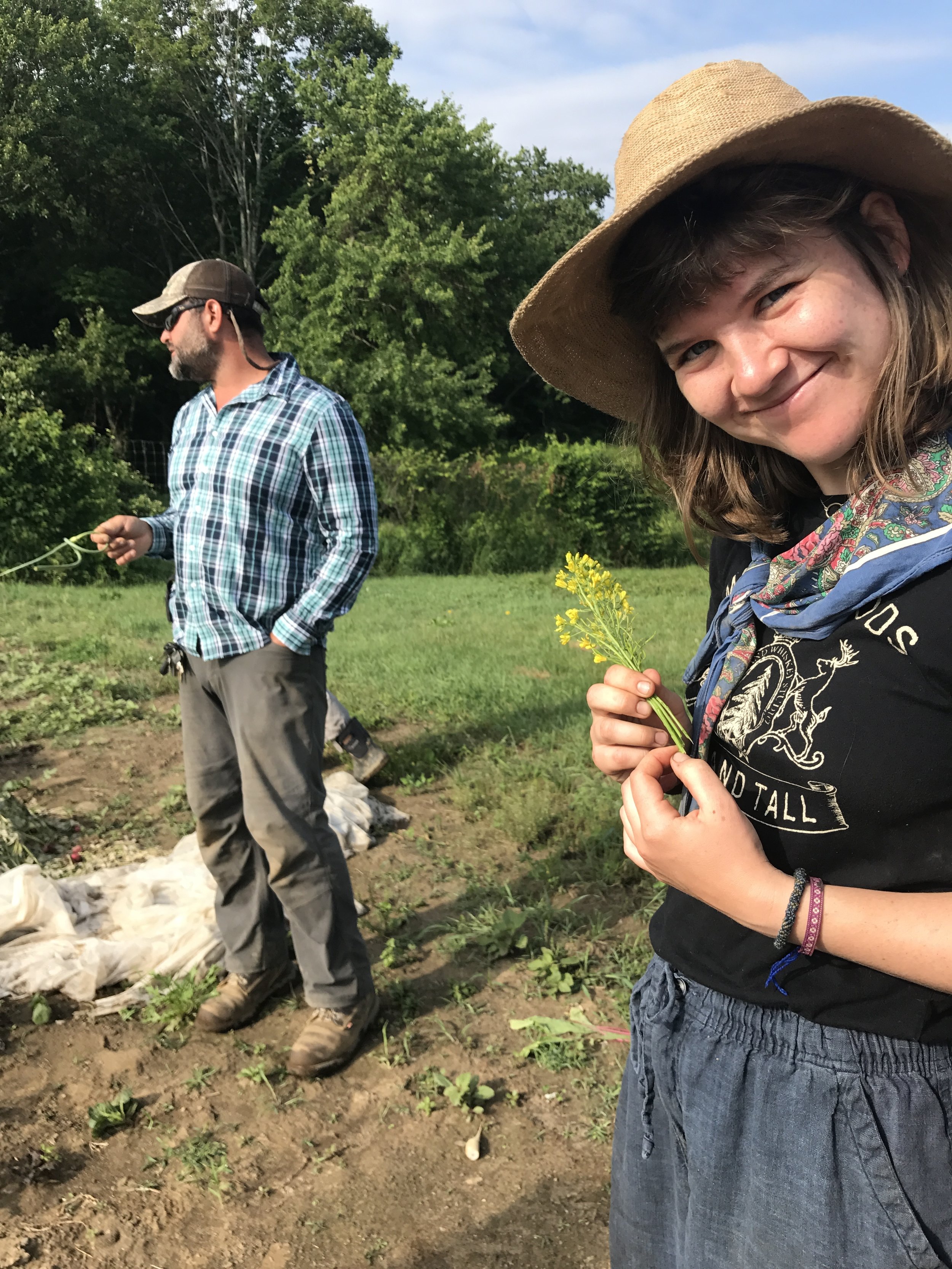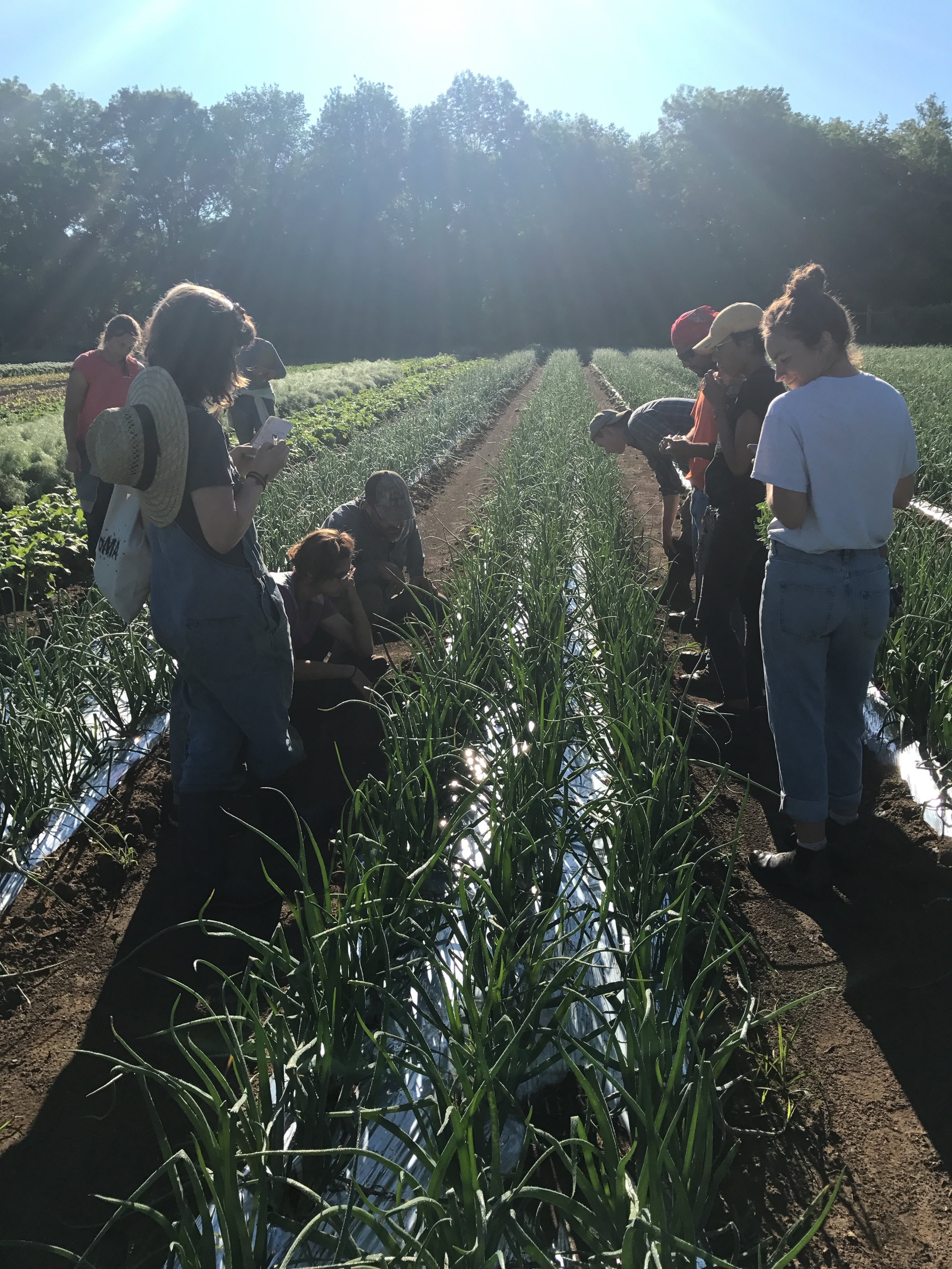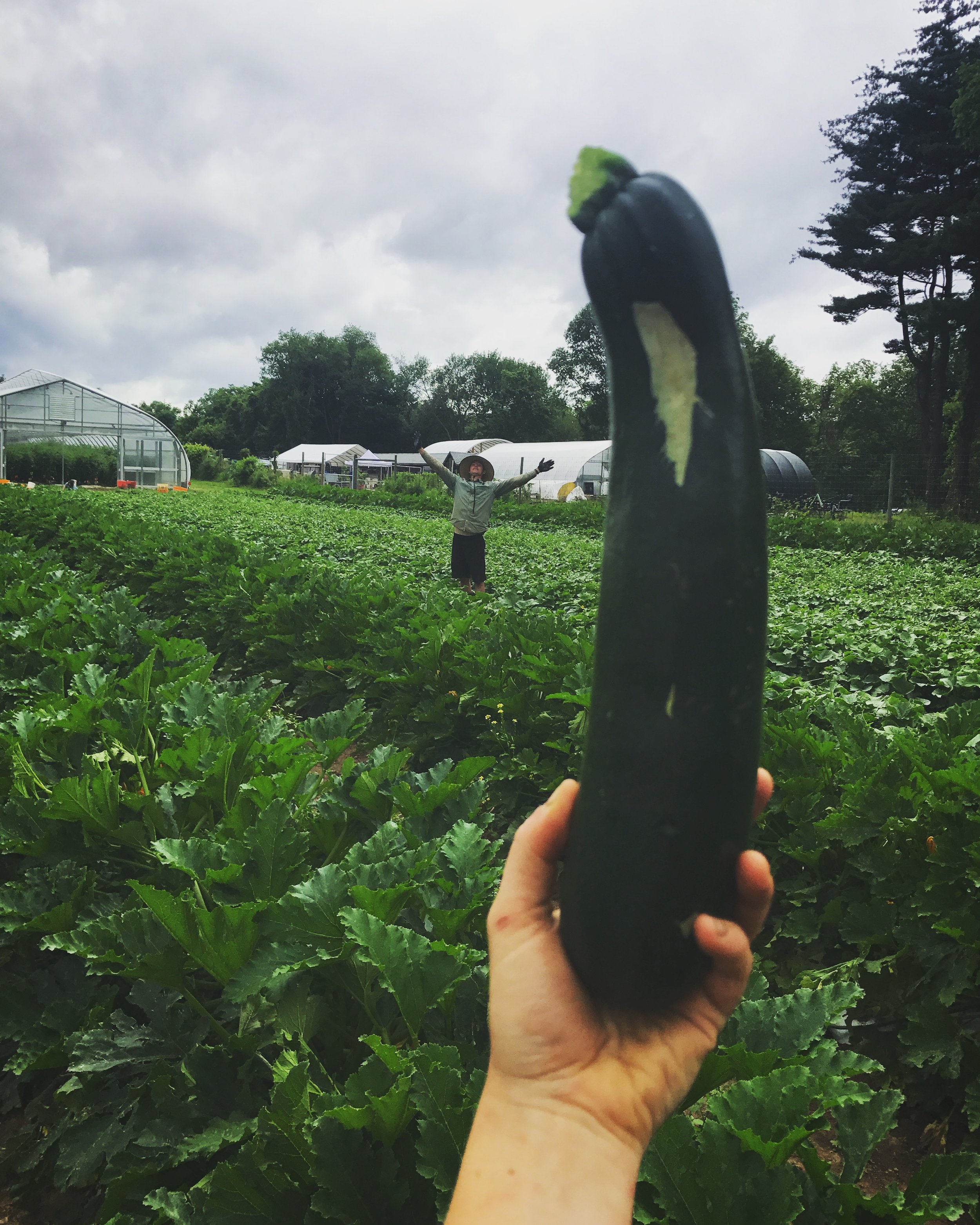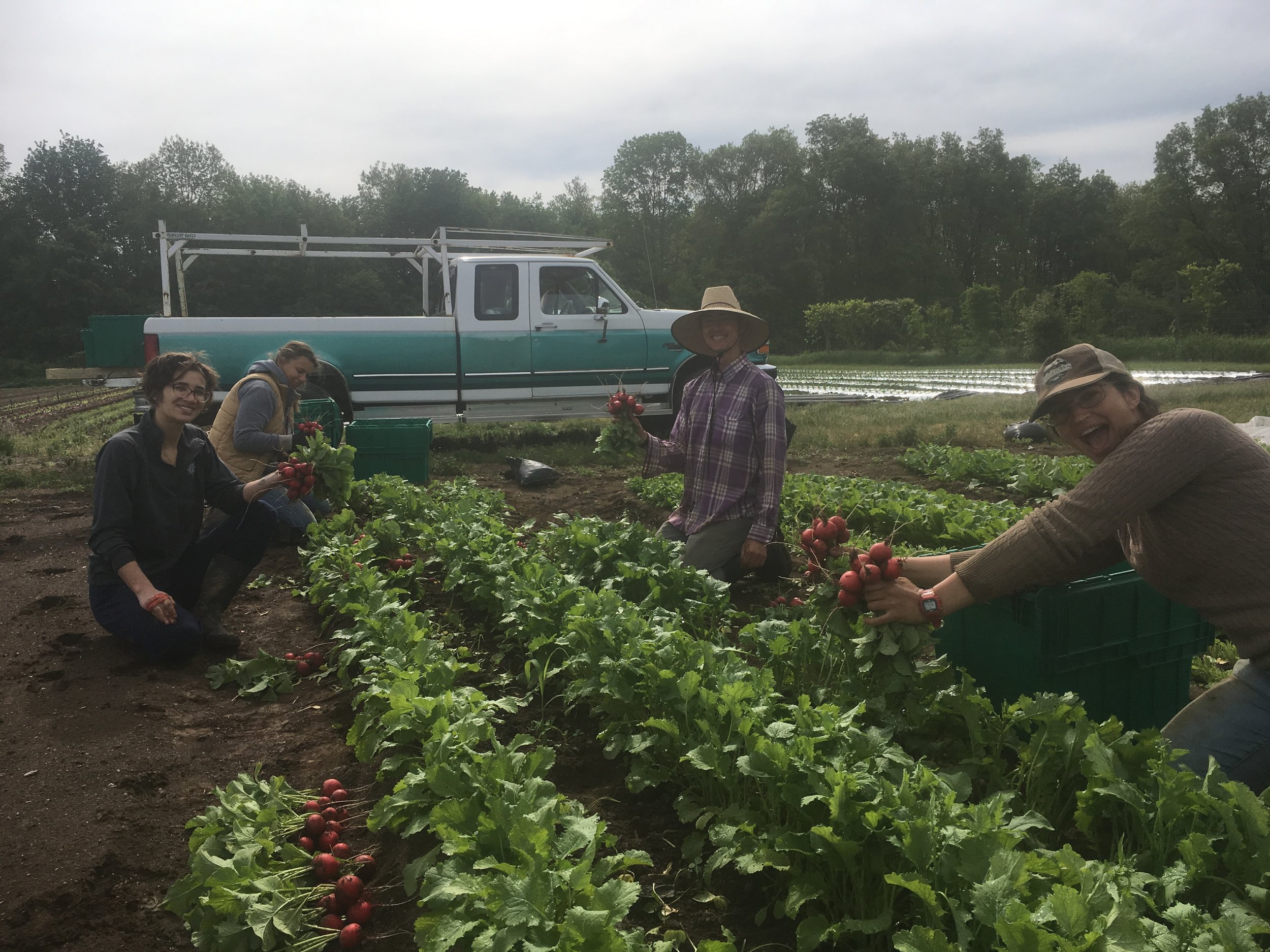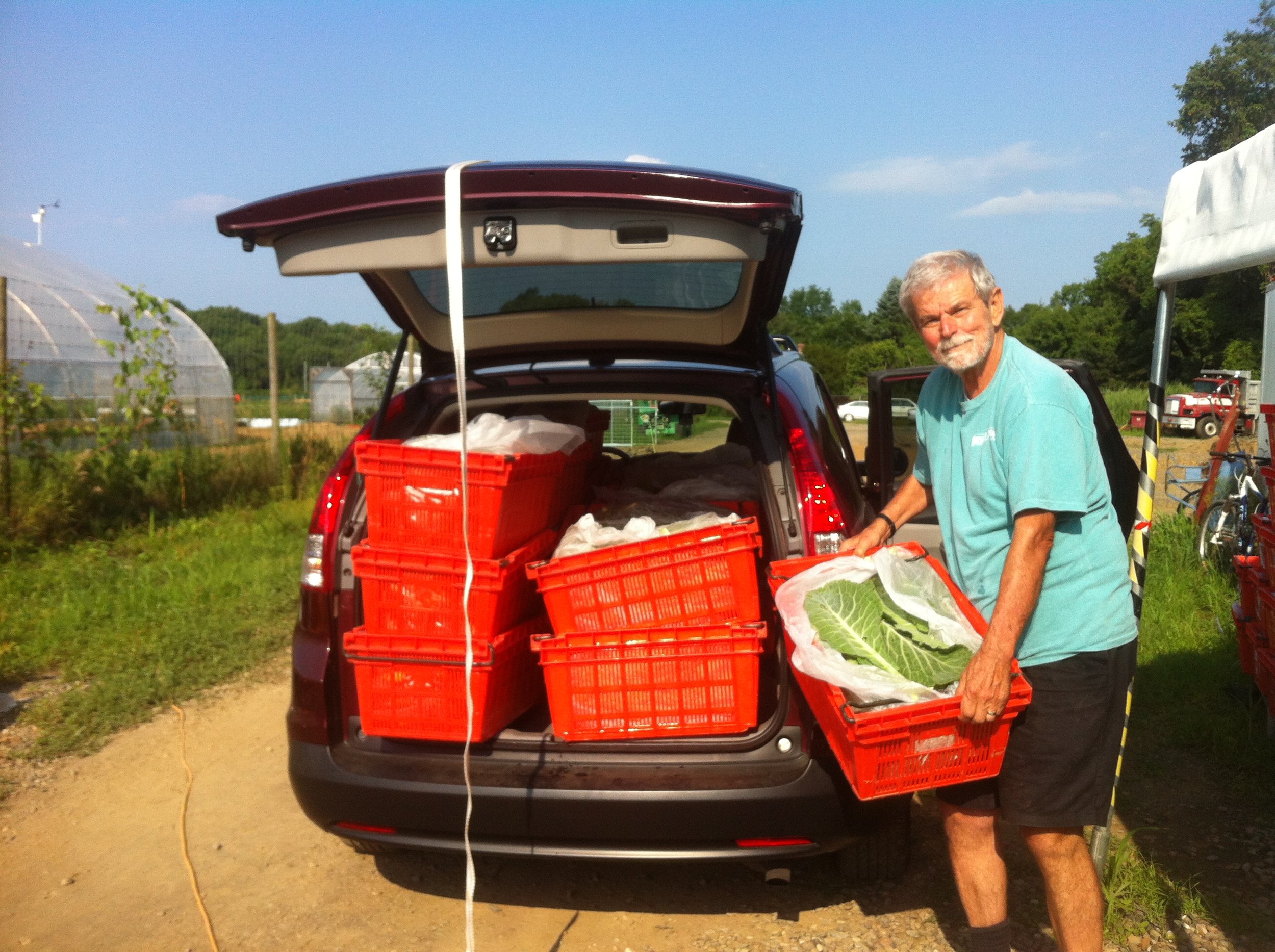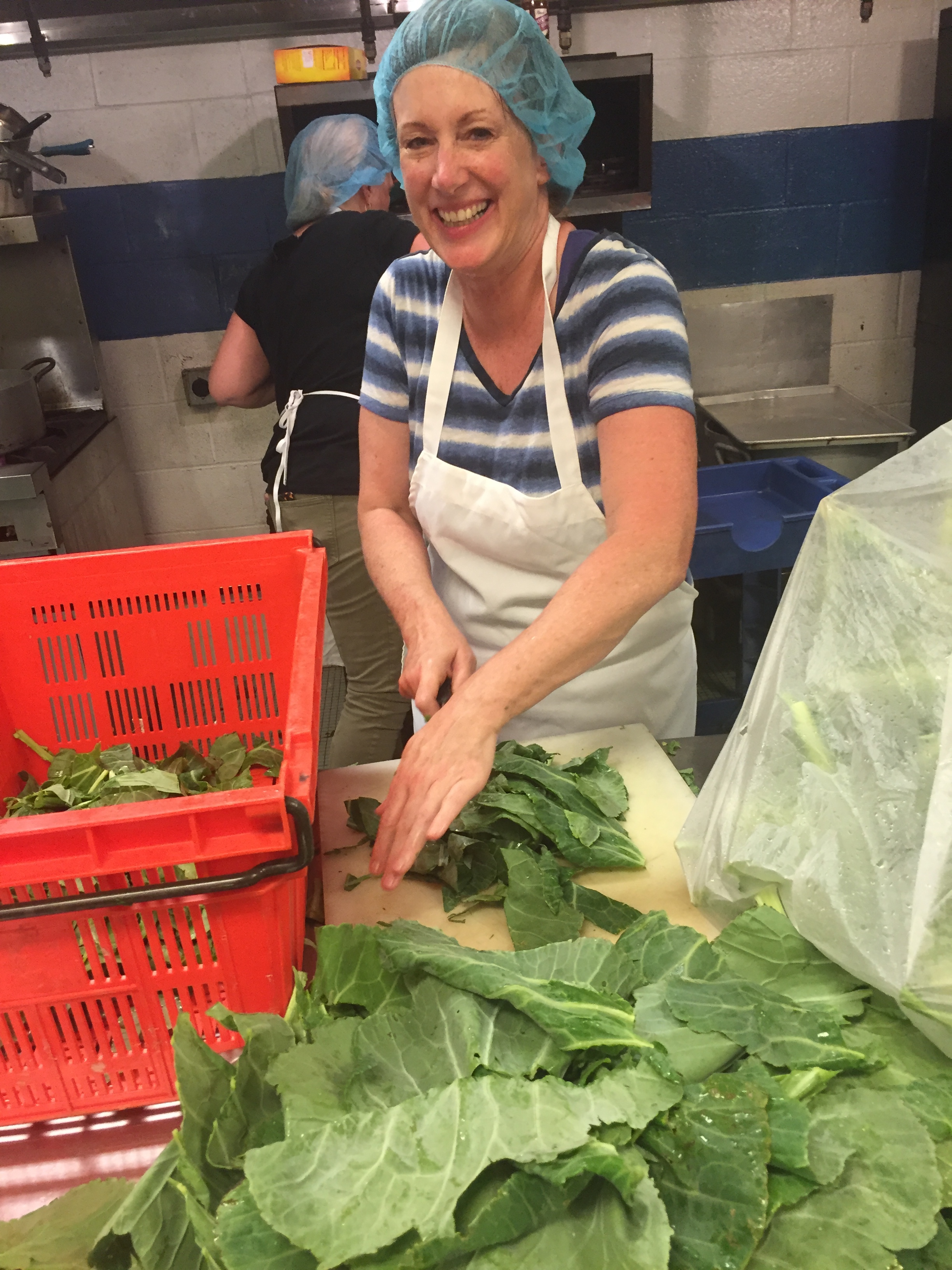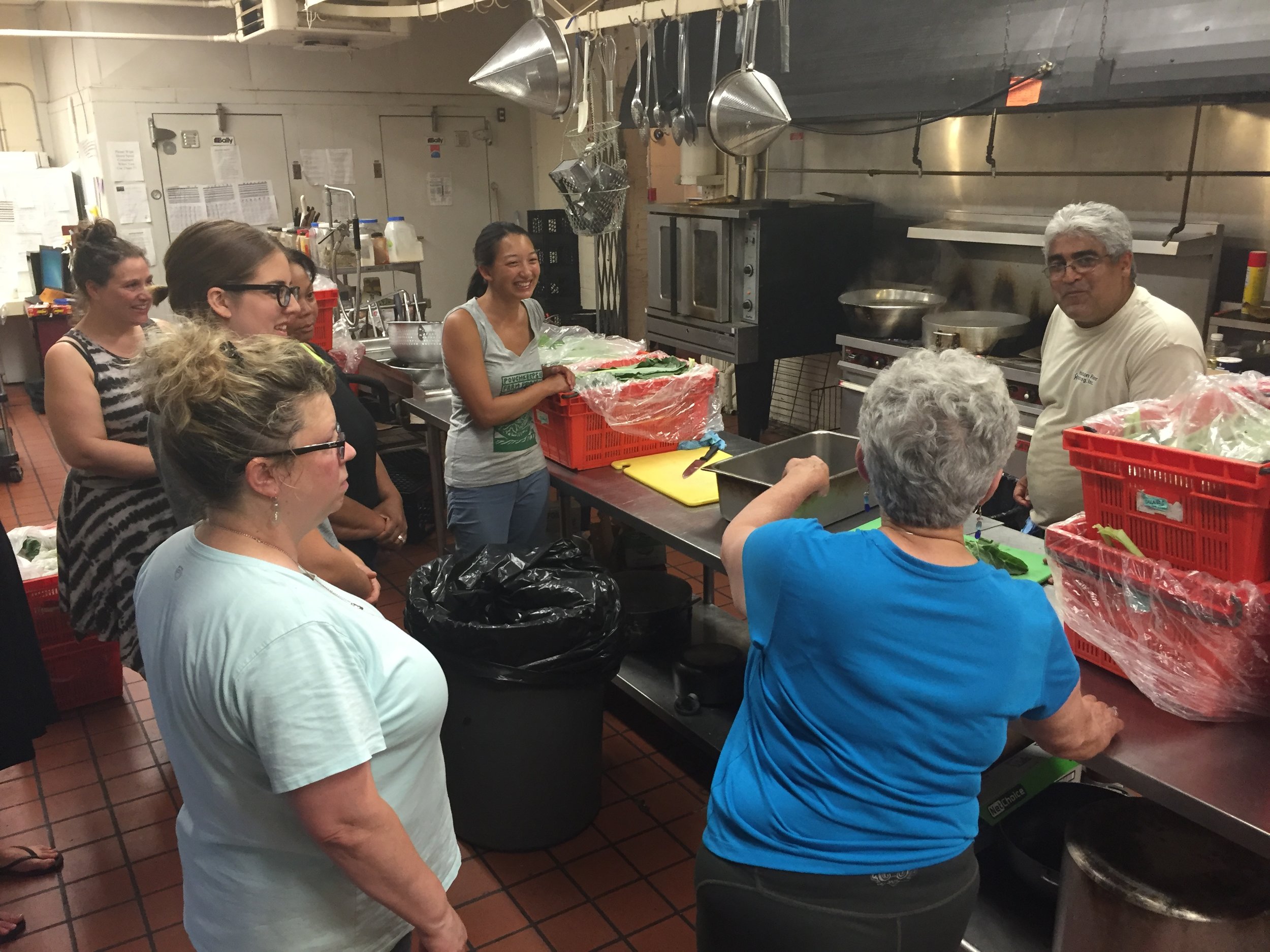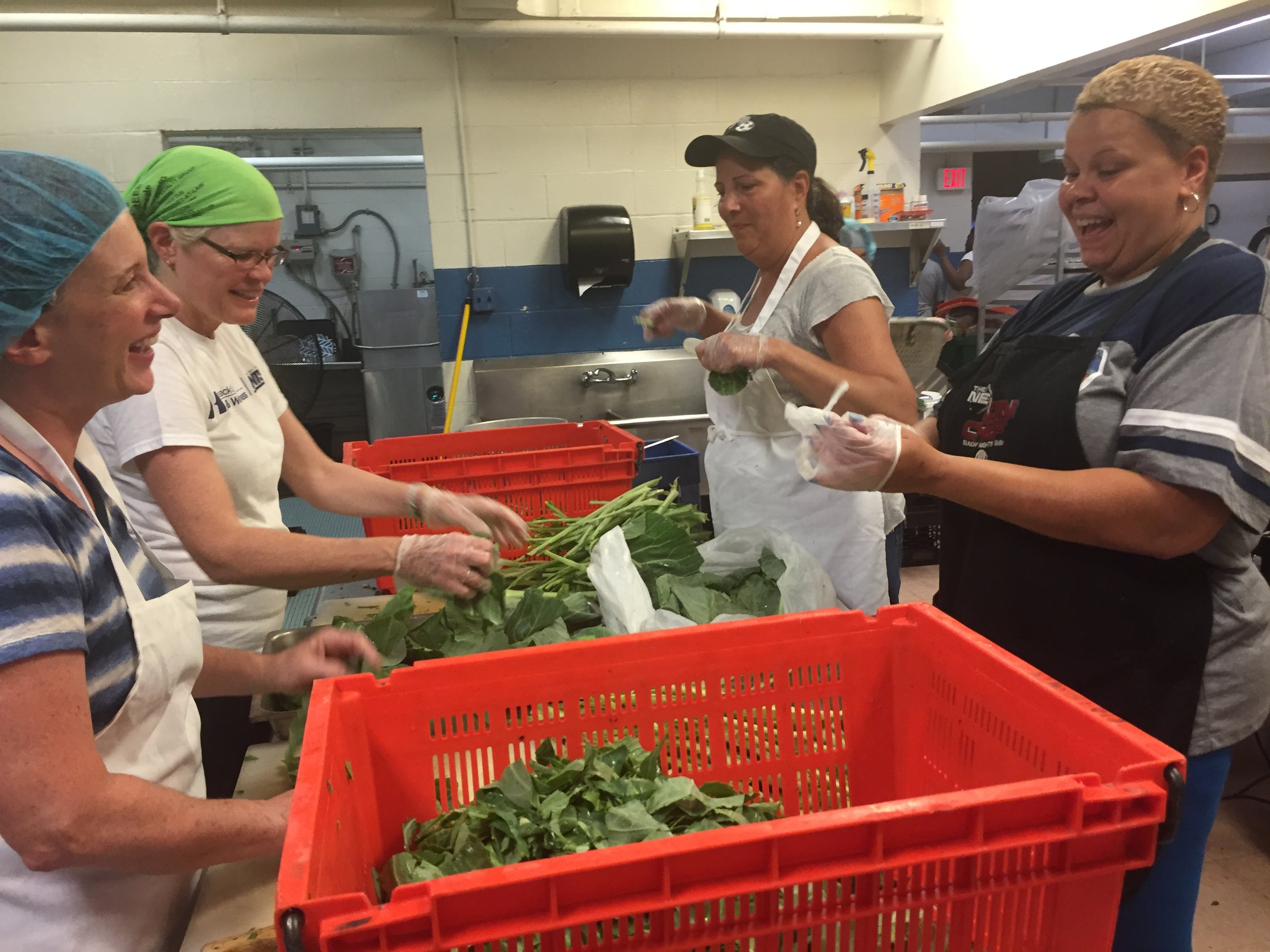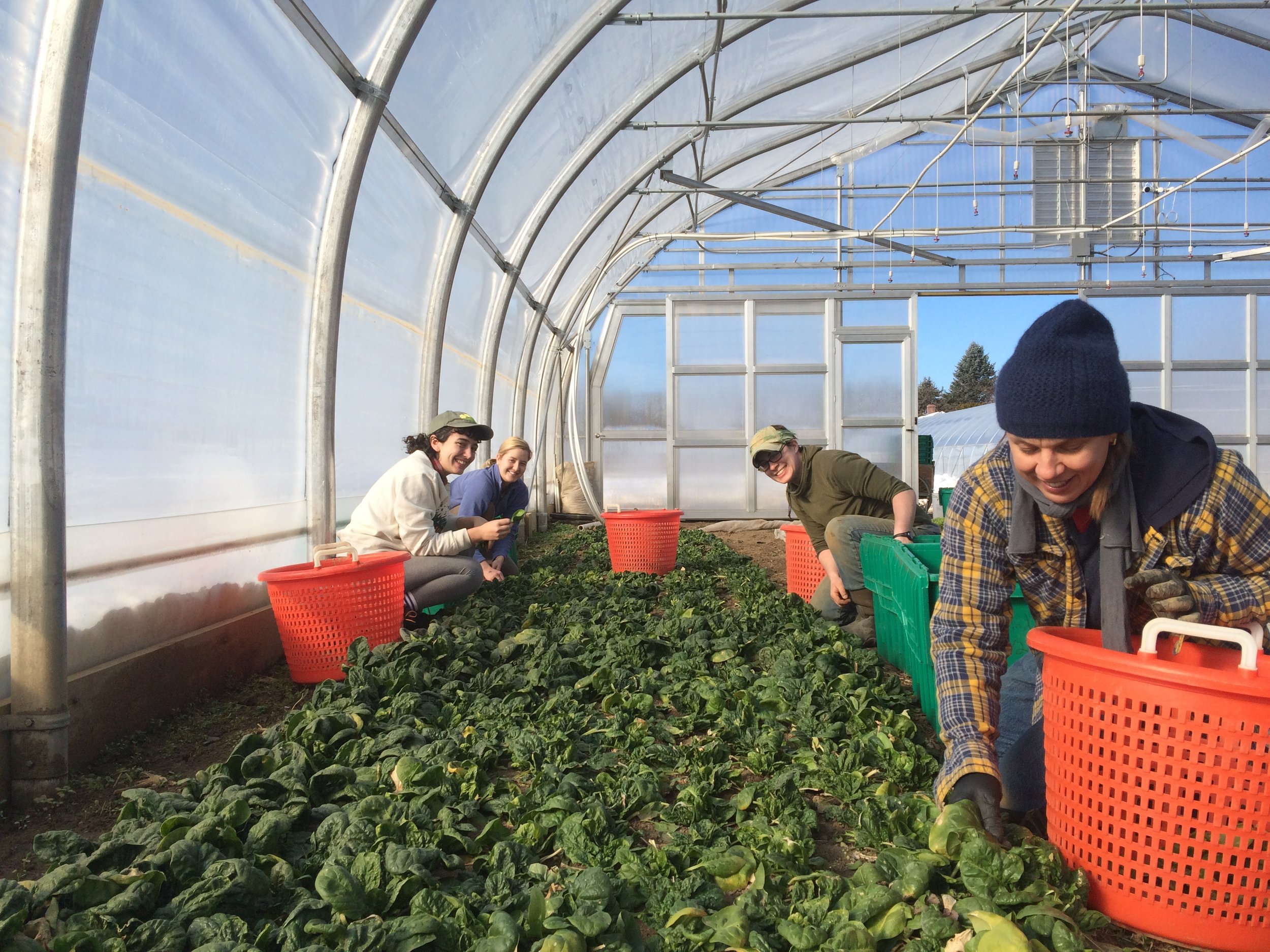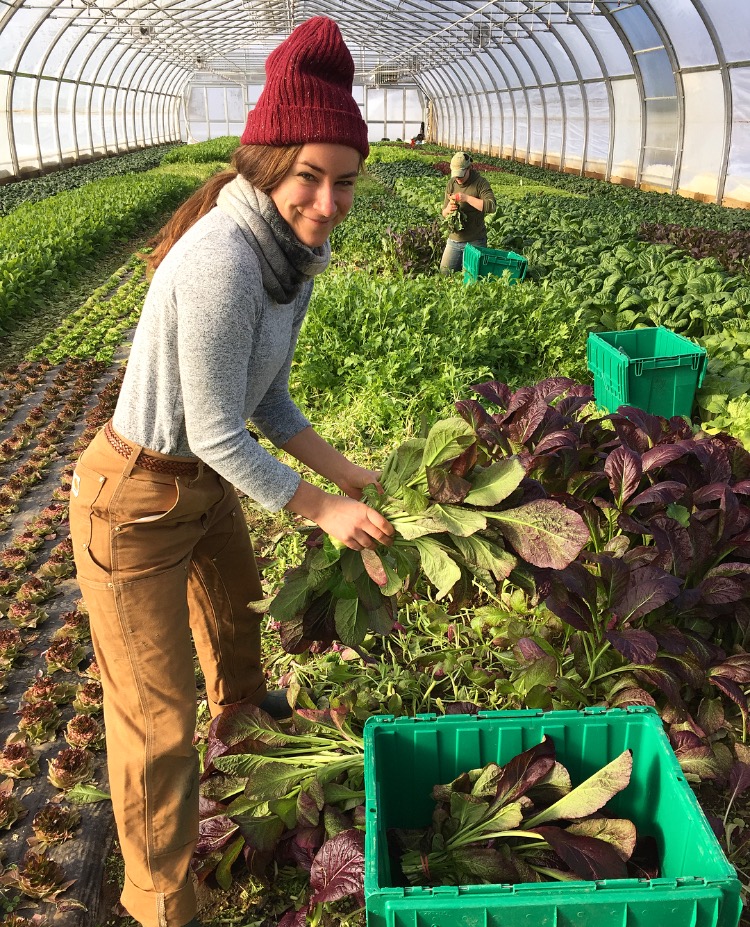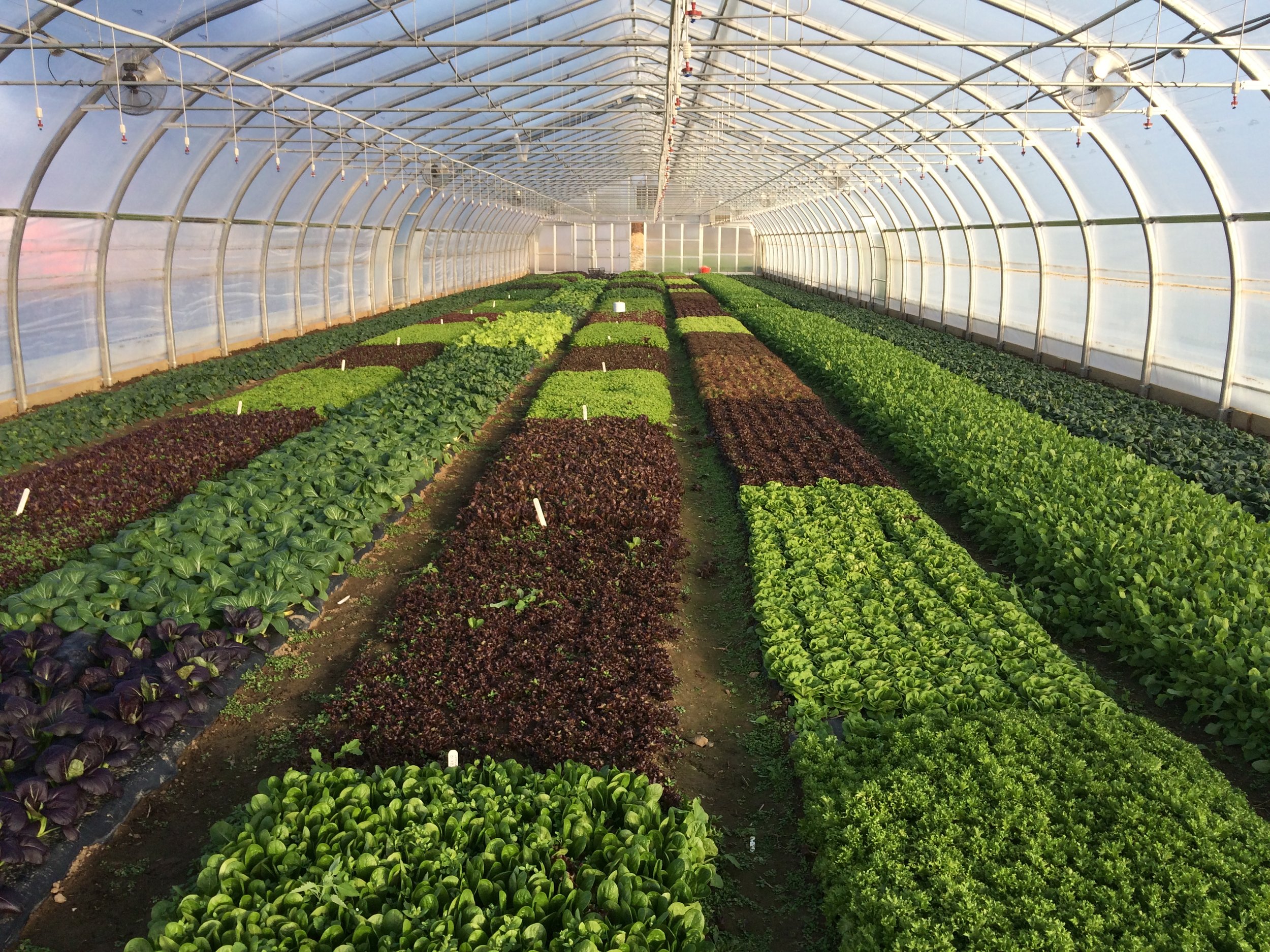By Patrick Lang
There is no better place to be than the farm for tracking the changing of the seasons. It seems that, in the blink of an eye, tender zucchini and sweet cantaloupe are replaced by potatoes and dark green kale, and we enjoy our first glimpse of winter squash being harvested and stowed away for the fall and early winter. Since farm labor is entirely impacted by the seasons, we also have been saying goodbye to amazing PFP farm interns, as well as a special longer-term crew member who is moving on to other exciting projects.
Veg Report
Crops are generally in very good condition after abundant summer rainfall: blueberries and green beans offered particularly large and tasty harvests this summer. Fall brassica crops (broccoli, kale, cabbages, radishes, rutabaga) are looking splendid following the surprisingly cool nights we’ve enjoyed throughout the summer. As always, however, there are winners and there are losers. Cherry tomatoes and peppers growing in the field this summer have not experienced the ideal amount of hot and dry weather that allows them to stay healthy and produce excellent fruit. If you notice haggard-looking cherry tomato plants in the pick-your-own section, know that cool and wet weather has precipitated the spread of fungal diseases. Peppers have been hit hard this season, first by hail when they were very young, and then by multiple heavy rains, all of which has made them more susceptible to bacterial diseases. While we are still able to harvest peppers, fruit ripened rather late this season, and we do not expect the plants to last long into September (despite this, of course, the crew continues to smile brightly while happily harvesting what they can!).
Internships and Training at PFP
We are sad to say goodbye to cherished summer interns, Fiona and Liz. It has been a joy to train and work with these engaged and energetic humans, and also to learn from them. We also say a temporary good bye to Merle, who fortunately plans on returning next season. We will miss you!
German, who is a full-season apprentice this year, has recently begun training in mechanical cultivation, which he will be taking over fully next year. This task, which involves weeding beds with tractor implements, requires much focus and careful coordination, since a slip of the steering wheel can translate to 10 kale or broccoli plants being uprooted in an instant. PFP has four cultivation implements that are used regularly, and they help us accomplish the same goal – a weed-free vegetable/fruit bed – in a variety of ways. Some bury weeds, some uproot them completely, and some cultivate the furrows. After brief training last fall, I managed cultivation this season; I am happy to have the opportunity to transfer that knowledge to another individual learning to farm here at PFP.
September on the Farm
I hope that I’ve helped to explain why patience is needed this season in the pepper and cherry tomato area. Remember how wonderful many other crops have been, due to the same cool, wet weather! The winter squash, potato, onion, and garlic harvests are now complete, and the farmers are excited to chill out a little more and sweat a little less. We are also excited to begin harvesting fall greens and roots! Parsnips, rutabaga, and celeriac continue to size up, and the first tender arugula and spinach leaves have our mouths watering. Enjoy the bounty!






